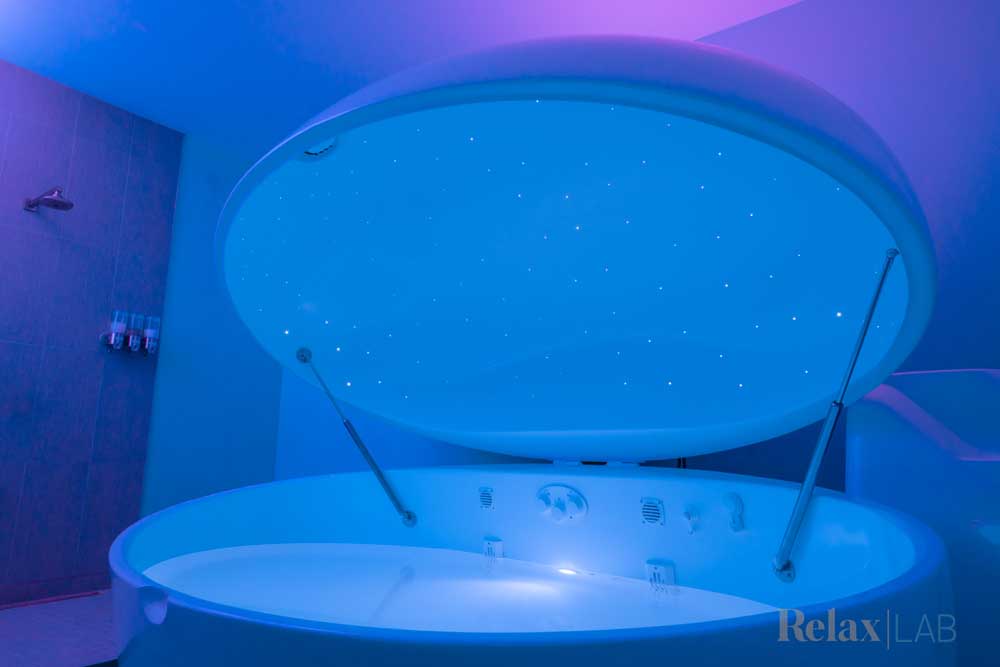Float therapy a ‘reset button’
Published 9:00 am Friday, January 8, 2021

- Float Tanks_00015.jpg
If you want to make stress-reduction and relaxation a priority, the words “float therapy” will come to the top of your list.
Perhaps you’re thinking of taking some yoga classes or beginning a meditation practice. These are great, and both have proven physical and mental benefits. The combination of the two has kept me sane during the past 10 months or so.
With the new year approaching, I was ready for a new experience: enter RelaxLab in Tyler, a float therapy center. Modern float therapy — you may know it as a sensory deprivation tank or isolation tank, has been around since the 1970s. The idea is that by eliminating the distractions of sight, sound and even gravity, deep relaxation is more easily achieved.
Thirty-, 60- and 90-minute sessions are offered. I split the difference and went for the hourlong session my first time. I was lightly skeptical about an entire hour in total darkness. I’m not normally claustrophobic, but I’ve also never been enclosed in a small, dark space for an hour, floating in silence.
I placed my shoes in a bin and took in my surroundings. An herbal tea bar flanks the long hallway’s left side, and soft music plays in the background — a very serene, spa-like atmosphere. I followed the three owners — Laura Barton, Yenissel De Nova and Lloyd Luthas — as they give me the rundown on what to expect.
The water inside the tank has almost 1,000 pounds of dissolved Epsom salt added — enough to simulate the Dead Sea buoyancy, allowing effortless flotation. A shower and shampoo are necessary before and after the float to prevent cosmetic residue; there’s no conditioner beforehand.
Luthas assured me that the hour would pass quickly. He added, “The time is yours. You can always cut it short if you feel like you’ve got what you need.”
The trio discussed the numerous benefits of floating — commonly including an extraordinary state of relaxation, stress reduction, muscle recovery and enhanced creativity.
Barton handed me a pair of earplugs and showed me how to operate the controls in the orb — a sleek, white pod, illuminated with blue LED lights. There is even a starlit ceiling — not at all the slightly scary image the words “sensory deprivation tank” had conjured up in my mind.
I lowered myself into the 94.5-degree water — the skin’s temperature, and I slowly pulled the lid closed. The lights and the stars, even soft music, were all on as a lay back. I’m 6 feet tall and had plenty of room. I could even sit up without fear of bumping my head.
I initially turned off the light and left the overhead stars on, because I wanted to try all the iterations available. I squirmed around for a bit, but not because I was anxious. It just felt so strange — but in the best possible way. I have been SCUBA diving before and had thought the sensation might be similar, but it’s really not. While both experiences promise weightlessness, SCUBA requires a lot of equipment — tanks, weight belts, respirators and typically a wet suit. In the tank, it was just me.
I turned off the music, slowly dimming the stars until I was in total darkness, with only the sound of my breathing. I resolved to be still and meditate, focusing on my breath. Acknowledging my thoughts as they pass through my mind, I didn’t linger on them, instead letting them float by like clouds. I was suspended in space and seemingly in time, unaware of where the water ended and my body began.
The music began playing so softly it registered as little more than a vibration. Gradually, it became louder as the lights turn back on. I was flabbergasted. There is no way that I’ve been floating for an hour. Stepping out of the orb, a glance at my watch confirmed it.
As I rinsed off, I noticed that the slight ache in my lower back is gone. I felt great – like I’d had a power nap. I placed my clothes in the tote bag that De Nova supplied, slipped on the provided robe and headed to the blow dry bar, which is filled with products to help get you ready to go back out into the world. After drying off, I noticed that my skin feels amazing — an unexpected bonus. I left feeling refreshed and light as air.
Still trepidatious about a sensory deprivation float? There are options. RelaxLab offers an open concept isolation tank where you can stretch out with no roof or walls. The most popular float is the enclosed float-around. The spacious pool— coming in at nearly 8 feet in diameter, lets you stretch out and enjoy a gentle floating experience. The high ceiling and open design help to soothe claustrophobia, making it ideal for first-time floaters. Both of these floats are suitable for couples.
I went through the rest of my day feeling great, blissed out and unperturbed, even by the horrific Black Friday traffic. I got a great night’s sleep, and two days later, my back felt better than it has in a while.
Would I do it again? You bet! As we move throughout our days, we are constantly bombarded by sights and sounds. It’s a busy world, and many of us multi-task our way through it, experiencing sensory overload daily. The float forced me to slow down and focus on the here and now, to hit the reset button.






